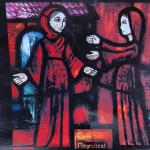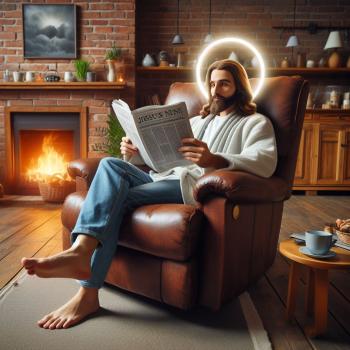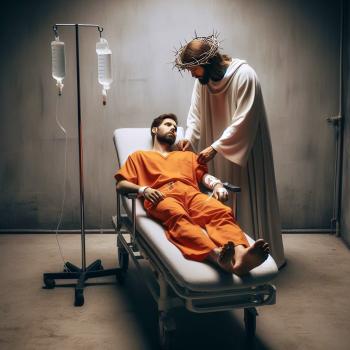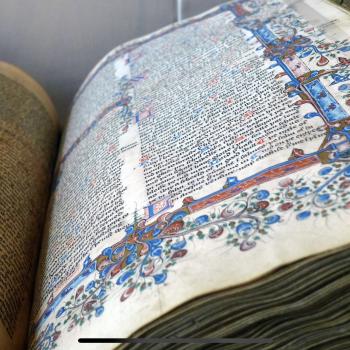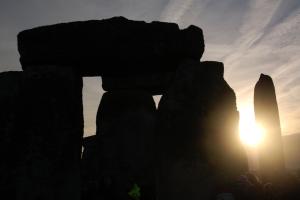
Each year on December 21st, I become a pagan.
Before you clutch your pearls, don’t worry—I’m back into full Christian mode by Christmas Eve.
But Winter Solstice is one of my personal High Holy Days.
Hello darkness, my old friend
By the time Solstice rolls around, we’ve survived half a year of steadily increasing darkness. About a month and a half before, that steady increase became a gigantic leap into the evening shadows when Daylight Saving Time ended—hello, five o’clock sunsets! But Solstice marks the turning point, the rebirth of hope, the reminder that even when the night is crushing your soul and sapping your will to do much of anything, it gets better.
Melodramatic? Maybe for some, but not for me. As someone who lives with Seasonal Affective Disorder during the winter and with depression year-round, it’s a big deal knowing that each passing day is a step forward.
A Life of Faith
I may not be able to see it yet. But I know it’s there. That’s faith. And faith inspires hope. And hope? Well, hope is one of the most powerful forces in the universe.
I mean, it’s not like there’s this huge change that happens immediately. December 22nd is going to feel pretty much the same as December 21st, as far as the light goes. But the hope that’s there—hope is what helps us face the journey.
Christian or Pagan?
If you think this is all starting to sound awfully religious, good. Because I firmly believe it is.
After all, Christmas falls just a few days after Winter Solstice—from what I understand, there’s some evidence which suggests its original placement at that spot in the calendar was likely meant to co-opt the Solstice celebrations that already took place among other “competing” faiths.
Truth be told, we really don’t know for sure exactly when in the year Jesus was born, which is just fine. It’s like adopting a pet with an unknown date of birth, so you just pick a day. Regardless of the actual date in history your beloved family member was born, it’s whatever day of the year you choose that becomes special.
The date doesn’t give the celebration its meaning. The celebration gives the date its meaning.
Christmas and Solstice
Whatever the reason may have been that Christmas ended up on the calendar where it did, I’m thankful for its side-by-side placement with Winter Solstice. On the surface, the two days observe two very different events. But if we dig a little deeper, we might find more similarities than we’d expect.
Solstice reminds us of our connection to creation. It’s the tilting of the earth that changes the seasons, and it’s the changing of the seasons that helps create this circular rhythm of life.
Because Winter Solstice comes, we know the duration of the daylight each day will lengthen. But we also know it won’t do so forever. Summer Solstice will arrive, and back the earth will go into its slow, dark descent. Seasons will change from winter to spring, from spring to summer, from summer to autumn, and from autumn back to winter. The cycle of seasons parallels the cycles of our lives as each year the earth experiences birth, growth, maturity, death, and new life.
Long Nights and Humble Beginnings
Celebrating Jesus’s birth right at daylight’s low point is a thing of beauty. This is the birth of a small child to insignificant parents of humble means. The world doesn’t immediately change because this birth has happened. There is no royal announcement sent to all the people in the kingdom that a king has been born. There are angel messengers who praise God and announce this royal birth, but not to the entire kingdom. They appear to shepherds, who tended to be nomadic and not exactly high society, rich, and powerful elites. Even when Herod gets the news in Matthew, it’s the magi—the foreigners—who bring it to him. An angel appeared to Mary, an unmarried teenager, at the beginning of her pregnancy. And at the end of it, an angel chorus appears to shepherds.
The Light Shines in the Darkness
In Jesus, hope for the world springs from the humblest of beginnings on that first Christmas. After all, we already know the story. We know where the journey is going to take that little baby, and we know that it changes everything for us.
We may not be able to see it yet. But we know it’s there.
Christmas is our reminder that the light shines in the darkness, and the darkness has not overcome it.
And Winter Solstice is also our very literal reminder that the light shines in the darkness, and the darkness has not overcome it.
Happy Solstice, folks. I’ll see you again on Christmas Eve, singing O Come All Ye Faithful, Silent Night, and Joy to the World along with everybody else.



